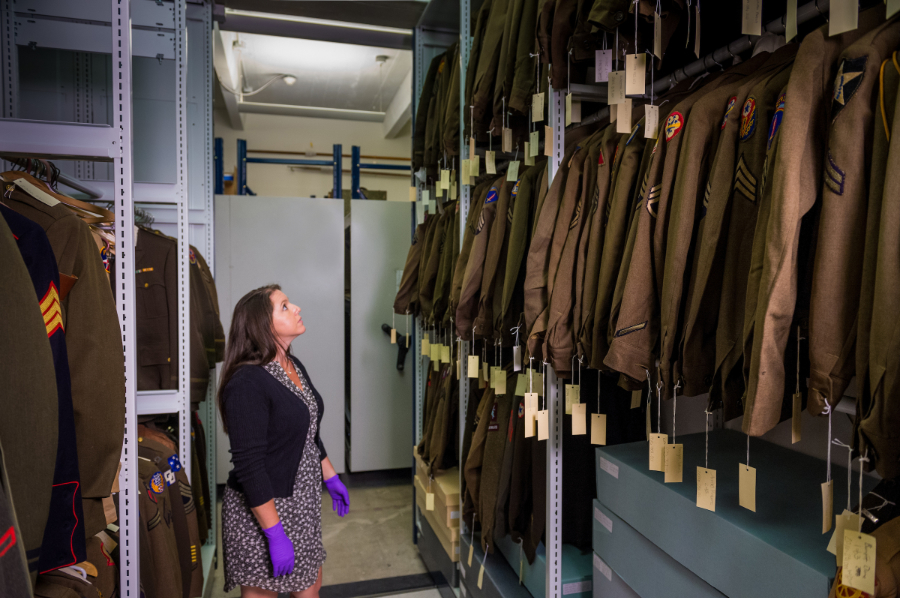At Conserv, we care about collections AND the people who care for collections. We talked to Toni back in May 2022 on disaster preparedness at The National World War II Museum in New Orleans and wanted to learn more about her and how she uses Conserv as the Director for Collections Management.

Senior Registrar & Director of Collections Management at The National WWII Museum, Toni Kiser.
Toni acquired her love of cultural heritage from antique hunting with her Grandma Marie, an avid yard sale and flea market shopper who had a predilection for practical items such as handwringers and a particular fondness for milk glass.
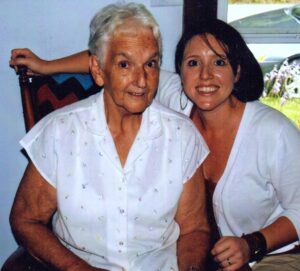
Toni Kiser and her Grandma Marie.
“She was always finding old things,” said Toni, “everything had a purpose and a story and a function.” Toni pursued that interest at Brevard College where she received a B.A. in History.
Wanting to directly interact with antique objects, she imagined herself working in a historic house like the Biltmore Estate in nearby Asheville. She went on to earn her Master’s in Museum Studies from George Washington University.
So how did Toni end up at The National World War II Museum?
In 2007, the Navy stationed her husband in New Orleans and a registrar position opened up at the museum shortly after. This time it was her grandfather, a veteran of the Battle of Guadalcanal, who helped set her on her career course. Toni was fascinated by his experience in the Pacific theater.
Even though it wasn’t a large part of her studies at school, she learned WWII history for fun in her free time. When she was interviewed for the registrar job, this knowledge allowed her to pass an informal test.
“I think one of the deciding factors was that I knew the difference between the German, American, and Japanese helmets, and I will credit my grandfather with that one,” explained Toni.
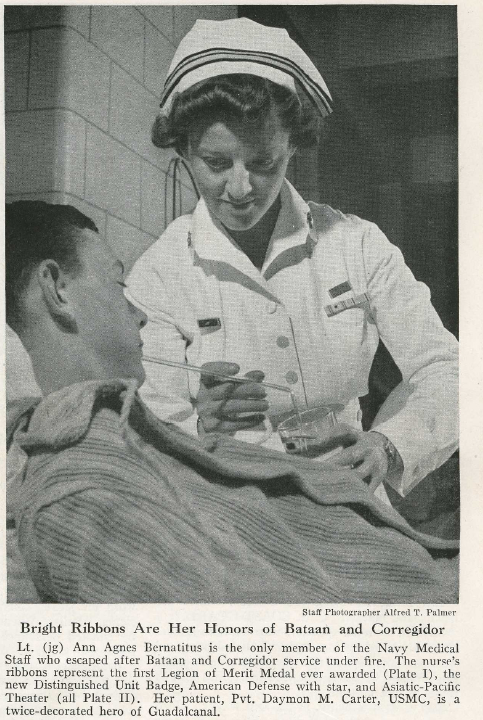
National Geographic issue featuring Toni Kiser’s grandfather after he lost his arm at Guadalcanal.
Fifteen years later, Toni continues her work at the museum as the Senior Registrar and the Director for Collections Management. She functions as the intellectual and physical control of the museum; caring for and cataloging the tanks, planes, uniforms, metals, ribbons, firearms, letters, and flags that make up the collection as well as managing the database.
She has an obvious passion for all things relating to material cultural heritage. She enjoys attending community conferences, has been on the board at the Association of Registrars and Collection Specialists (ARCS), and keeps in touch with the International Council of Museums (ICOM) to stay up to date on how military history is presented across the world. She is also a member of Collections Stewardship (CS), which is where she first heard of Conserv.
Environmental monitoring equipment for museums
Toni started looking for remote environmental monitoring equipment a few years ago when the museum expanded their artifact storage area to almost double the original footprint. Additional building systems caused wrinkles in the climate control of the collection.
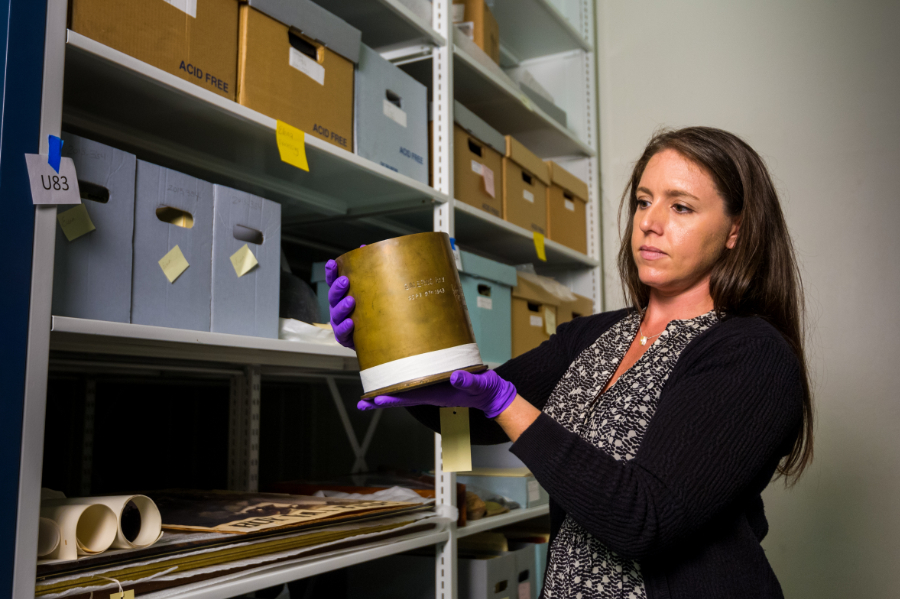
Toni inspects an engraved shell commemorating the service of the USS Mayo. Image courtesy of The National WWII Museum.
New Orleans is notoriously hot and humid, and after a couple of weekends of HVAC problems, Toni knew that something had to change.
“It came down to two different instances of literally going home on a Friday afternoon and coming in on Monday morning to a sauna…” said Toni, “you’re like ‘why is the AC not on, and how long has it been out?’ It could have been off since 6:30 pm on Friday.”
After ironing out the HVAC situation, Toni realized she needed environmental monitoring equipment that would provide her with real-time data to react quicker to incorrect temperature and humidity levels.
The HOBO dataloggers the museum used in the exhibit cases were read out quarterly, so staff wouldn’t be aware of abnormal temperature fluctuations until two months after the fact.
Instead of having to get up and physically look at or download from the HOBO datalogger, she wanted a wireless sensor that would alert her immediately if the temperature or humidity was too high or low, even if she wasn’t at the museum.
That is when Toni decided to reach out on the Collections Stewardship’s forum to see if anyone had a favorite wireless sensor network.
“I just put it out there,” Toni told us, “‘Who has a remote monitoring system that they like?’ I got like three answers for Conserv right away.”
She considered other options but decided on Conserv because of the ease of use, simplicity of installation, and reasonable cost for everything that was included in the subscription.
She liked that our wireless sensors and collection monitoring system were more specific to her spaces, as they are optimized for museums and archives.
Wireless monitoring equipment for real-time reaction
We helped Toni with set-up, of course, but she finds Conserv easy to use.
“Having worked in a lot of databases, this is so front-end user friendly,” she told us, “I’m glad [Conserv] walked me through it, but I was like, ‘I could have figured that out, that wasn’t that hard to do.’ It was really intuitive and that was really really helpful.”
After we quickly replaced a single faulty sensor for her, Toni has been using Conserv happily ever since.
Conserv employs LoRaWAN for wireless connectivity, so the thick concrete walls that hamper the museum’s WiFi don’t affect the communication of the sensors with the gateway.
Because the gateway is not tied to the museum’s internal network, Toni can keep up-to-date with conditions from anywhere. She likes to keep the Conserv dashboard open as a tab in her web browser throughout the day to monitor real-time environmental conditions, such as relative humidity (RH).
She said,
“I can look now and adjust accordingly for needing extra dehumidifiers. That is a big thing for us, being in south Louisiana, you know, ‘oh, time to turn on the dehumidifier.’”
As the museum was going through roof renovations, Conserv’s real time notifications let her know that the lack of insulation was causing the temperature to rise over the weekend when she wasn’t in the building.
With data and alerts available on her phone through the Conserv mobile app (Android and iOS), she can keep in touch with her collection if the power and internet goes out at home, which can happen when tropical storms make landfall in Louisiana.
In the summer of 2022, she used real-time data from Conserv to remotely monitor the collection from her house during Hurricane Ida.
Let the software do the work
In addition to remote monitoring of real-time data, Toni appreciates the easy-to-share analytics we offer through our environmental monitoring software.
She finds the weekly mold report to be a helpful tool for making sure conditions are consistently in an acceptable range.
The analysis of light levels also gave her some insights she didn’t previously consider, like the brightness of the security lights and how that might be affecting her collection.
If Toni wants to share information from the sensors, Conserv creates the charts for her.
“I could get data and do analysis of the HOBO ones but you really had to know what you were looking for. I made pie charts and graphs, but this makes it easy to understand and read,” she explained.
The analytics provide digestible data that allows her to more easily communicate with the facilities crew and operations manager about the performance of the building systems.
Toni thinks being able to use her backlog of environmental data is a key draw of our collection monitoring system. She can input all of her old HOBO logger readings into Conserv, and analyse and use the data that was just sitting in a folder before.
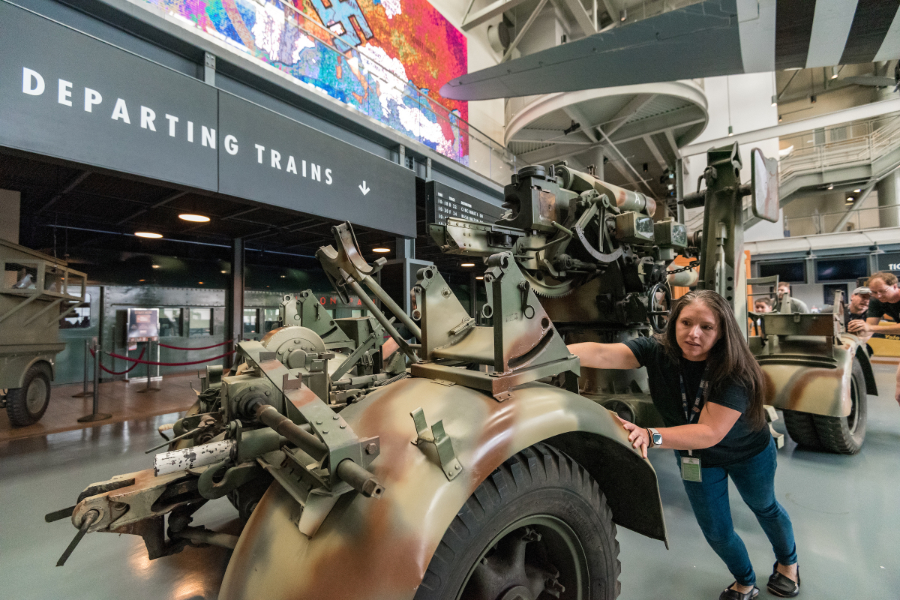
Moving a German 88mm Flak gun into position for display. Image courtesy of The National WWII Museum.
As she gathers new data and inputs the old, Toni plans to use her analysis to leverage a larger ask for funding to get all of the museum’s galleries online with Conserv wireless sensors. We are just happy to help preserve her grandfather’s legacy and her grandmother’s passion for years to come.
If you have any questions about environmental monitoring, integrated pest management, or just want to talk about preventative conservation, please reach out to us! Don’t forget to check out our blog or join our community of collections care professionals where you can discuss hot topics, connect with your peers or even take a course to get familiar with the Conserv platform.

